Nissan’s Altima sedan has been around for more than 30 years. It will probably not be around after the end of the 2025 model year – following its sibling, the Maxima, into oblivion.
There are many reasons why, the chief one being that sedans as a class have fallen out of favor – in favor of crossovers that offer more interior space and especially more cargo space in a vehicle that has about the same footprint.
But there are a few good reasons to consider an Altima as an alternative to its handful of remaining rivals.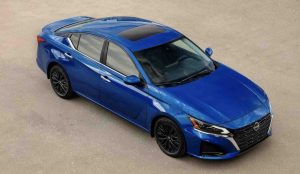
What It Is
The Altima is a mid-sized family sedan that competes with the dwindling number of others in the class that are still available, principally the Toyota Camry and the Honda Accord. It differs from them in that it does not come standard with – or even offer – a hybrid powertrain or a turbocharged engine, which is one of the reasons why it costs less than both of those two.
Prices start at $27,000 for the base 2.5 S trim. There are also 2.5 SV ($27,430) and 2.5 SR ($28,830) and top-of-the-line SL ($33,330) trims. All come standard with the same 2.5 liter four cylinder engine paired with a CVT automatic transmission and front wheel drive.
All-wheel-drive is available optionally on all trims except the base S.
For cross-shop purposes, the ’25 Camry – which comes standard with a hybrid drivetrain – stickers for $28,400 to start. An Accord – which comes standard with a turbocharged 1.5 liter engine (a hybrid drivetrain is available optionally) stickers for $28,295 to start.
There are two other cross-shops you might want to consider, too. One of them is the Hyundai Sonata – which is the least expensive of the bunch (base price $26,650) and is the only one of the bunch that does not come standard with a CVT automatic or a hybrid drivetrain or a small turbocharged-to-make-up-for-it engine.
The other is the Hyundai’s Kia-badged sibling, the K5. It stickers for $26,990 to start and still offers a more powerful optional engine – and comes standard with an engine that’s the same size and slightly more powerful than the Nissan’s. It also has a conventional eight speed automatic rather than a CVT.
Nissan has discontinued the previously available turbocharged (variable displacement) engine that was optional last year. This engine was supposed to be the replacement for the V6 engine that was previously available in the Altima (and standard in the discontinued Maxima) but it wasn’t popular with buyers (unlike the V6, which Nissan, like Toyota and Honda, was effectively forced to take off the table for “compliance” reasons).
Other than this – and the addition of a Special Edition Package for the SV that bundles a panorama sunroof, a larger (12.3 inch) LCD touchscreen, wireless charging and 17-inch wheel/tire package – the Altima carries over into what will probably be its final model year unchanged.
What’s Good
Standard 2.5 liter engine is big enough to not need a turbocharger to make adequate power.
Less expensive than rivals like the Camry and the Accord.
AWD is available – but optional.
What’s Not So Good
2.5 liter engine is the only available engine.
Camry – with its standard hybrid drivetrain – offers much higher gas mileage.
Sonata costs less, comes with an eight speed automatic (not a CVT) and also comes standard with a 2.5 liter engine that doesn’t need a turbo to make adequate power.
The Altima – like most of the other family sedans in its class – used to be available with a standard or an optional (more powerful) engine. It – like the Camry and the Accord – used to be available with a V6 engine. But that was in the Before Time – which was about five years ago – when it was still common for mid-sized family sedans to offer a V6.
Today, fours are the rule – and sixes are for luxury-priced cars.
The good new is the Altima’s four is not a small four that needs a turbo to make up for its lack of size. It makes 188 horsepower – which is about the same as the 192 horsepower made by the Honda Accord’s standard (and much smaller) 1.5 liter four, which needs a turbo to make about the same power. Put another way, if the Honda’s 1.5 liter engine did not have a turbo to boost its power, it would not have enough power. But that power comes at a cost – in the form of a higher MSRP for the Accord – and (probably) higher over-the-road maintenance costs and repair costs.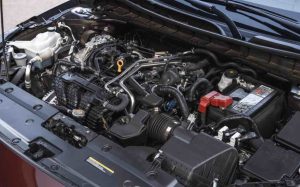
On the downside, the Altima’s four burns a lot more gas than the Toyota Camry’s hybrid-assisted 2.5 liter four, which gets 53 MPG in city driving and 50 on the highway.
The Altima rates 27 city, 39 highway, which isn’t bad mileage. But the Toyota’s is much better – so much so that it will erases the higher buy-in cost of the Camry, itself, after tow or three years of driving (and saving on gas).
But you may also end up with higher over-the-road maintenance/repair costs, too – since the hybrid system is more complex and one of the key components is an EV-like battery pack that will – eventually – have to be replaced. Maybe not for 15-20 years – because hybrid batteries are not subjected to the heavy discharge/recharge cycles or high voltage “fast” charging that EV battery packs endure. But all batteries eventually lose their capacity to accept/hold a charge and when that happens, the battery must be replaced.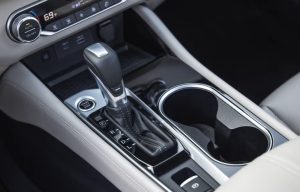
One other downside – as regards the Altima – is that the only available transmission is the standard continuously variable (CVT) automatic transmission. These are basically economy transmissions that manufacturers use to eke out small gas mileage gains (2-3 MPG being typical) not so much to benefit the buyer but to comply with federal CAFE regs that demand incremental MPG increases every several years.
Many people do not like CVTs because of their “shiftless” operating characteristics and because they have – historically – not been as reliable as conventional automatics that shift up and down through the gears.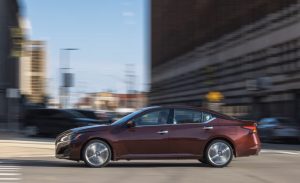
But the Altima’s biggest downside, arguably, is that it no longer offers an optional (stronger) engine, which means the only engine is the 2.5 engine paired with the CVT. This is a competent but unexciting drivetrain that is appropriate to a basic transportation appliance; to an economy car.
And the Altima was once upon a time something more than that.
You can still get AWD as an option – and this gives the Altima better grip on wet/snow-slicked roads. But it does nothing to make the Altima more fun to drive.
There was a time when the Altima was the four door sports car for the person who couldn’t afford a Maxima, which Nissan once touted as its four door sports car. Both were available with the same magnificent 3.5 liter V6 – and a manual transmission. The Maxima’s been gone since last year – and the Altima’s optional V6 and formerly available manual transmission are, too.
That leaves just the Altima – itself.
It’s still a nice looking car but it’s no longer the exciting car it used to be. But boring has its virtues, too. The Altima is a fine family car. It has enough power to get to 60 in about 7.5 seconds – which isn’t slow (even if it’s not quick) and the ride is comfortable for long trips.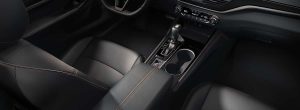
It rides on sensible 16-or-17-inch wheels that have tires with sidewalls rather than thin strips of rubber about an inch tall that may impart quick steering feel but also cause you to feel every dent in the asphalt as if it were a gaping pothole two or three inches deep. This is a small thing that’s also a big thing – and not just because of the salutary effect (or not) on ride quality of tires with sidewalls rather than enormous “rims” with thin strips of rubber wrapped around them. Tires with more sidewall have more give and so are less apt to rupture when you do hit a bad pothole – or strike a curb. And a 16-or-17-inch tire will cost you less to replace when it wears out than a gnomesayin’ 19 or 20-inch tire on a “rim.”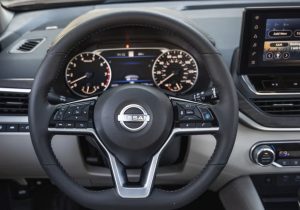
The Altima’s CVT automatic has its upsides, too. Acceleration is electric car linear – and smooth – because the CVT does not up-or-downshift. Floor the accelerator and the car accelerates – without any back-and-forth “snap” at each gear change, because there aren’t any. You can hold a cup of coffee to your lips – with your lap underneath the cup of hot coffee – and none will spill and burn unless you let go of the cup.
Drivers who like a snappy car don’t like CVTs, of course. But the Altima is no longer trying to appeal to those drivers. Again: It is now a family car that used to be a sporty car.
It is also a practical car – which is an attribute most sensible people want in a family car. The previously available V6 was a practical performance engine but the just-cancelled variable displacement four that replaced it was not. The idea was to replicate the power of the old V6 with a smaller four that could also get better mileage. But what you got was a more complicated engine that was less reliable for just that reason.
The 2.5 liter four isn’t a rock star – but it is also not finicky and erratic and unpredictable, either (as rock stars often are). It’s a regular gas engine without a turbo that does not require extravagant maintenance and that has a long track record of being very reliable – which is exactly what most people want in a family car.
At The Curb
The 2025 Altima looks very much the same now as it has for the past five years – which is also not a bad thing in that change for the sake of change is sometimes not a good thing. It still looks like it might be an exciting-to-drive car, though – and that might lead to some letdowns. 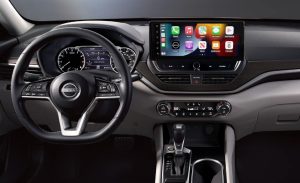
Though the V6 and the turbo four are gone, the flat-bottomed steering wheel, sport buckets with hug-you-in-place lumbar supports, carbon fiber trim (SV grade) and racy-looking analog gauges are reminders of the Altima’s former sportiness. SR trims even come with paddle shifters and a leather-trimmed gear selector.
On the upside, none of the foregoing is unattractive or objectionable in any functional way.
And the straightforward controls are anything but objectionable. Everything secondary to actually driving the car – such as adjusting the cabin temperature or fan speed – does not interrupt actually driving the car. There is a touchscreen for some things but most things are controlled via knobs and switches that are ergonomically superior to the foolish fad of trying to control everything via the touchscreen, as if a car were just an oversized smartphone.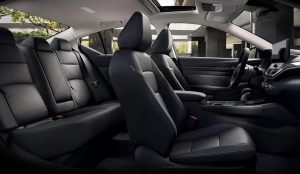
Wheels have been mentioned already but are worth another mention. The base S trim’s 16 inch wheels are steel – which is rare to find fitted to any new car for some stupid reason. Alloy wheels are lighter – but they are also much more fragile and much more expensive. It is very hard to hurt a steel wheel and they are largely immune from the corrosion that is a common problem afflicting alloy wheels that often results in poor bead sealing and tires that constantly leak air.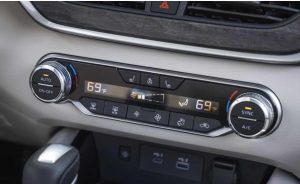
One of the few things worth a gripe is that Nissan won’t let you buy several desirable options – including AWD or a sunroof or heated seats or rear USB outlets – unless you pony up for the SV trim first.
But it’s a small gripe – because the SV is priced only a few hundred bucks higher than the base S. The only reason not to get the SV is that it comes standard with 17 inch alloy wheels.
There is one other small thing. The Altima’s rear seats do fold forward – and once down connect the passenger cabin to the trunk, allowing for more stuff to be crammed in there (or partially in there and partially in the passenger cabin). But you have to pop the trunk to release the catch that holds them in place and they don’t fold all-the-way flat.
The Bottom Line
The Altima’s not Mr. Excitement.
But maybe that’s not what you’re looking for in a family car.
. . .
If you like what you’ve found here please consider supporting EPautos.
We depend on you to keep the wheels turning!
Our donate button is here.
If you prefer not to use PayPal, our mailing address is:
EPautos
721 Hummingbird Lane SE
Copper Hill, VA 24079
PS: Get an EPautos magnet or sticker or coaster in return for a $20 or more one-time donation or a $10 or more monthly recurring donation. (Please be sure to tell us you want a magnet or sticker or coaster – and also, provide an address, so we know where to mail the thing!)
If you like items like the Baaaaaa! baseball cap pictured below, you can find that and more at the EPautos store!



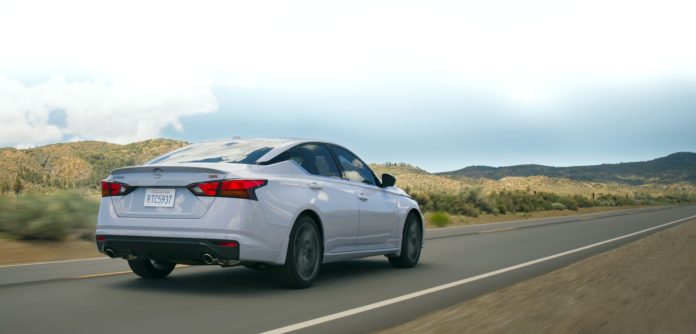

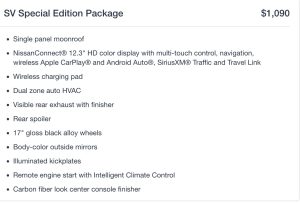

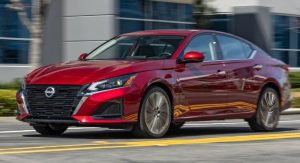








What Really Killed Nissan? The Truth About Their Cars
A tech…. mechanic…who works on these cars every day…explains….
1 Hard to work on…so higher labor costs
2 Their horrible, defective, CVT trans in everything…
3 highly computerized cars…but…the software is crappy, defective, bug filled..
4 shorter life span then other cars
https://www.youtube.com/watch?v=hnCDxf0uBDE
But…still far better then all the new battery cars…so called EV’s….
This Altima sounds like a good car for most people. No hybrid, no turbo. Only problem is GDI and whatever cell phone / wifi it comes with (toxic radio waves). CVTs aren’t so great but if you change the fluid every 30k miles they should last until at least 100k miles, I assume, I’m not sure though.
I personally would want a V6, but lots of people that are in the new car market should buy this car while they can still get one. Honda ruined their Accord with their 1.5 turbo engine. IDK what Toyota’s Camry has for a motor right now, maybe that’s a good option too, not sure.
Did y’all see this?
https://thelibertydaily.com/lot-government-coercion-study-slams-forced-transition-evs/
‘continuously variable transmissions (CVT) … are basically economy transmissions’ — eric
As an engineering student in the era before CVTs existed, I contacted a company researching the subject, for a paper I was writing.
To me at the time, it was an interesting mathematical, mechanical and materials problem to develop an infinitely variable gear ratio transmission. It never occurred to me that the final product would be boring, dispiriting and disillusioning.
An analogy can be made to the human body. Doctors tried to implant centrifugal pumps in place of diseased human hearts. It didn’t work. The body is adapted for the sharp systolic and diastolic pulses of the human heart. These are necessary for the health of the cardiovascular system.
Substitute the constant pressure and flow rate of an alien centrifugal pump, and the body says, ‘I quit.’ Likewise, CVTs systematically destroy human souls. AVOID.
I’d be fearful that Nissan won’t exist a year after buying it.
Given Nissan’s state, that’s a legitimate concern.
Eric,
I used to own an ’06 Altima, a 2.5S. It was a Gen 3, the last one to come with a conventional automatic tranny; from ’07 on, the Altima has had the CVT.
Secondly, I wouldn’t characterize the Altima as an exciting car to drive. Its handling was planted, secure, and competent; it would always go where you wanted to with no surprises. However, it wasn’t exciting or inspiring to drive; I never thought of it as a driver’s car. The steering was very light, and it gave little feedback; the steering was more similar to that of an older American car, really. It wasn’t an exciting and engaging car to drive in the same way a BMW or a Mazda is to drive.
Thirdly, the Altima was a solid, practical car. Though it was a midsize car, it had the interior space of a larger car, while having none of the drawbacks of a larger car.
Fourthly, my Altima was well appointed; it was, in every sense, a luxury car. It had power windows, power door locks, cruise, A/C, and electrically adjustable mirrors. Though the driver’s seat was manual, it had multiple knobs on the side to adjust it just so. I felt coddled in it, and it was no problem to drive on long trips.
SO! So, I submit to you that, having owned a Gen 3 Altima, that it was always a family car. Though its handling was secure and competent, I’d hardly call it inspiring. For people wanting a car like that, even then, you’d choose a Mazda6 or a BMW 3 or 5 series.
The discontinuation of the Altima is just another sign, once again, that the automotive landscape in the U.S. will be similar to that of Cuba soon
Counting myself as a big sedan fan and having driven numerous Altimas – since half of them go directly to rental fleets – they’re pretty solid.
Good price, no frills, superb fuel mileage (when not compared to the all-new Camry hybrid), decent price, and far better driving (sedan) dynamics than these awful, tipsy crossover “things.”
It’s a shame the SR trim engine was dropped, as that 2.0 VC turbo pulled well, but I surely wouldn’t trust its experimental nature and screwball crankshaft/complexity in the long term.
Would be amazing to get back that old VQ 3.5 from the early-aughts.
The 2 downsides I see are the fragile CVT and the permanent stigma of Big Altima Energy.
As much as I would still never buy one with my own money, just like the Malibu, I’ll be sad when it’s gone.
Flip, the 2.5L engine is much better than the VC one. The 2.5 is solid and, with semi regular oil changes, easily last 250K miles. I thought that it pulled pretty good too; it did in the ’06 I used to own.